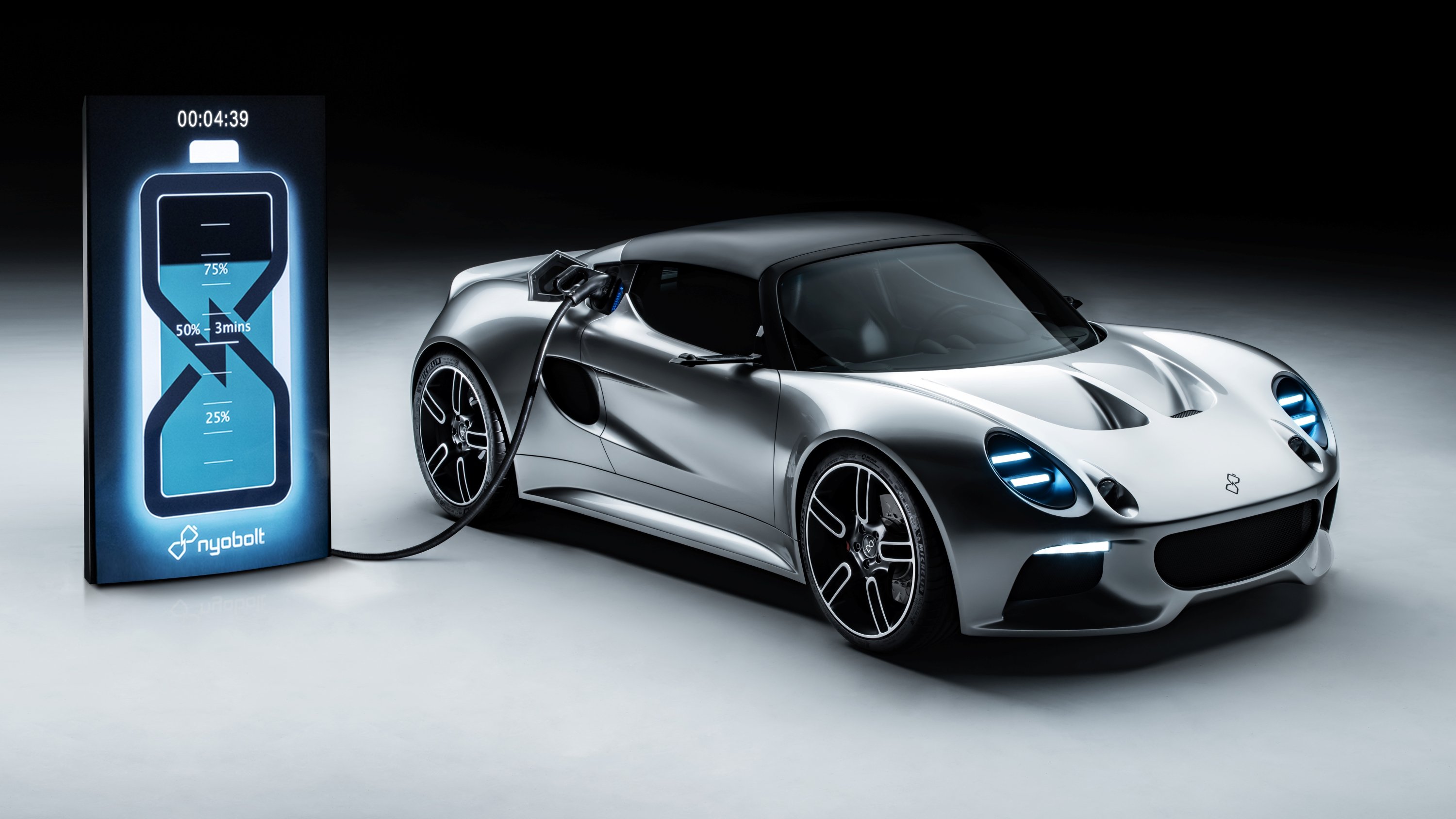Sleek, high-tech Nyobolt EV is a platform for new battery tech
A new concept sports car EV from Callum and Julian Thomson introduces Nyobolt’s innovative fast-charging batteries to the world

This cute frog-faced electric roadster conceals a potentially game-changing technology: ultra-fast-charging batteries. They are developed by Nyobolt, a Cambridge, UK-based tech start-up that is working hard to reduce one of the biggest hurdles to EV ownership: charge time.

Nyobolt has commissioned Julian Thomson, former head of design at Jaguar (and now design director at GM Advanced Design Europe) to wrap its cells with a cutting-edge sports car design befitting a battery pack capable of adding 250km of range in just six minutes. To develop the concept, Thomson brought on board Callum, the UK-based design consultancy set up by his predecessor at Jaguar, Ian Callum.

If the Nyobolt EV concept reminds you of the Series 1 Lotus Elise, then Thomson is the reason why; back in 1994, the designer conceived the shape of this quintessential ultra-light sports car, which went on to usher in a new era in for Lotus. The Elise had several more iterations before production finally ended in 2021, but none was as coherent and well-formed as the original.

Thomson has taken the Elise as a blueprint for two reasons – firstly, because he has always wanted to refine the design. The other reason is weight. That 1996 car weighed just 725kg, an impossible target in the world of battery-heavy EVs. Even so, Nyobolt’s technology squeezes impressive range and performance out of a 35kWh battery, meaning the EV is substantially lighter than its competitors. Carbon-fibre bodywork helps, as does bespoke systems for battery management.

Although the aim is to develop an engineering prototype, the Nyobolt EV looks set to remain a concept, even though the design has been fully conceived and refined right down to the smallest detail. Despite its compact appearance, the new sports car is 100mm wider and 150mm longer than the original, with 19in wheels instead of the Series 1’s tiny 15in rims.

The overall effect is sleeker and more refined, helped by the HD cameras in place of the original wing mirrors, a slightly higher waistline and a removable roof panel. New LED light bars replace the Lotus’ round lights, front and rear, although the signature apertures remain. The charge port is located behind the driver’s door, and the rear of the car is more muscular.

Aleck Jones, creative lead at Callum, says the goal was to retain the original Elise’s ‘iconic sports car character’. ‘Nyobolt’s technology allows this car to tick all the boxes that made the original Elise such a desirable drivers’ car with a cult following, but it’s electric,’ he says, ‘These two things don’t usually come hand-in-hand, due to weight and battery packaging constraints.’
Wallpaper* Newsletter
Receive our daily digest of inspiration, escapism and design stories from around the world direct to your inbox.

Nyobolt hopes to deploy this technology next year, working on everything from light commercial vehicles to passenger cars. The promise of lighter EVs introduces a positive feedback loop, leading to lighter cars, better efficiency, and so on. One of the key breakthroughs made by the company is durability; the battery pack can go through 2,000 cycles with no degradation. As faster chargers become available, the company hopes to increase its battery sizes to take advantage of speed at any scale.
Jonathan Bell has written for Wallpaper* magazine since 1999, covering everything from architecture and transport design to books, tech and graphic design. He is now the magazine’s Transport and Technology Editor. Jonathan has written and edited 15 books, including Concept Car Design, 21st Century House, and The New Modern House. He is also the host of Wallpaper’s first podcast.
-
 Jony Ive’s LoveFrom creates a new look for San Francisco’s much-loved architectural bookshop
Jony Ive’s LoveFrom creates a new look for San Francisco’s much-loved architectural bookshopLoveFrom has unveiled a new graphic identity and typeface for William Stout Architectural Books, a mainstay of the city’s architecture and design community for over 50 years
-
 Uniqlo’s colourful ‘gift shop’ at Tate Modern marks 25 years of the London institution
Uniqlo’s colourful ‘gift shop’ at Tate Modern marks 25 years of the London institutionA Uniqlo store in miniature, ‘Uniqlo Tate Shop, Art For All’ opens at Tate Modern to coincide with a weekend of celebration, featuring a playful take on museum ‘merch’ alongside a colourful array of Uniqlo staples
-
 Out of office: what the Wallpaper* editors have been up to this week
Out of office: what the Wallpaper* editors have been up to this weekMuch of the Wallpaper* team found itself congregating in Venice this week, whether that be for the annual architecture biennale or to check out a new creative platform. Work and play took the rest of us to Miami, Malta and… Dalston